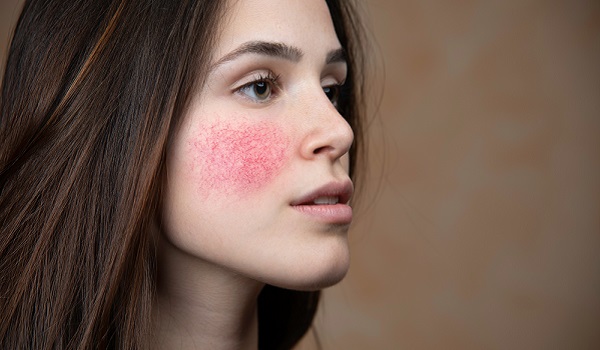Rosacea is a highly prevalent skin ailment. It results in skin redness that lasts a long time. Rosacea also causes changes in blood vessels and pus-filled pimples. You could have several symptoms as a result of Rosacea.
Explain Rosacea.
Rosacea is a skin disorder characterized by inflammation resulting in redness on the face and various other body areas, including the eyes. Skin edema and acne are symptoms of various medical diseases. The illness has a protracted course. The illness is terminal. To treat Rosacea, make an appointment with the Best Skin Clinic in Ludhiana.
What factors lead to Rosacea?
- Impact on vessels: A disease that impacts your immune, nervous, or blood vessels.
- Minute skin mites: The nose and cheeks of your body are home to a naturally occurring minute mite. Excessive numbers of these mites lead to rosacea symptoms.
- A contagion: One may become infected with the H. pylori bacterium. Research indicates that this illness may cause Rosacea in those who have it.
- A dysfunctional protein: Your skin is shielded against infections by the cathelicidin protein. If the protein is not functioning correctly, rosacea symptoms will manifest.
What signs of Rosacea are present?
During Rosacea, people experience the following symptoms:
- Irritated eyes: Your eyes may be watery or bloodshot from irritation. In addition to redness and swelling of your eyelids, this illness can produce styes.
- Stinging or burning: Your face may experience stinging or burning sensations, itching, or constriction.
- Arid look: The skin in the middle of your face may feel extremely dry and scratchy.
- Plaques: Elevated red areas can appear like a rash without causing any alterations to the surrounding skin.
- Thickening of the skin: Rhinophyma is a disorder where your skin thickens and enlarges due to some rosacea occurrences. Your nose develops this condition, giving it a bulbous appearance.
- Swelling: Swelling on the face can happen independently or in conjunction with other rosacea symptoms.
Treatment plans for the Rosacea.
Each person’s rosacea treatment plan is unique and focuses on symptom relief or reduction and keeps the condition from worsening. Possible rosacea treatments include:
- Medication: Various oral and topical medications are available to treat rosacea-related bumps, pimples, and redness. Medications assist you in controlling your symptoms and fewer episodes.
- Laser treatment: Your physician may employ lasers to minimize skin redness and eliminate visible blood vessels.
- Surgical procedures: Your physician may suggest surgery in extreme situations to address the nose disfigurement resulting from rhinophyma.
How does the change in season trigger the Rosacea?
Rosacea is a long-term skin disorder that causes flushing, redness in the face, visible blood vessels, and occasionally pimples and swelling.
- Temperature Extremes: Rosacea symptoms can be exacerbated by extremely hot or cold temperatures. Cold weather exposure can dehydrate and dry up the skin, irritating it and producing flushing.
- Sun Exposure: Rosacea symptoms are frequently brought on by exposure to the sun. Sunlight’s ultraviolet rays can irritate skin and induce flushing, redness, and other symptoms.
- Humidity: Changes in humidity levels, such as those experienced during seasonal transitions, can affect the skin’s moisture balance
- Wind: The dehydration and irritation caused by windy weather can exacerbate the symptoms of Rosacea. Wind can accelerate the skin’s evaporation of moisture, which can cause dryness and irritation.
- Indoor Heating: Indoor heating systems are frequently utilized to keep interior temperatures tolerable during the winter.
Nowadays, people suffer from skin-related issues, so contact the best dermatologist in Ludhiana at RB Luxe Plastic Surgery Clinic.

